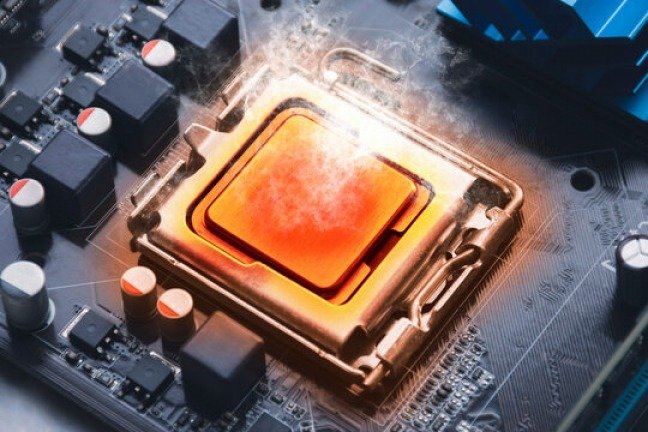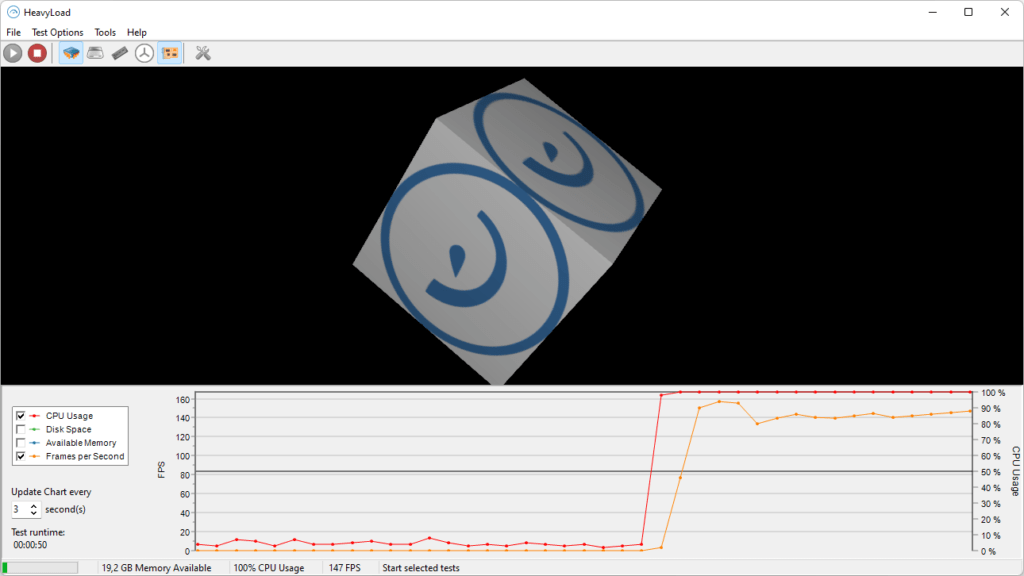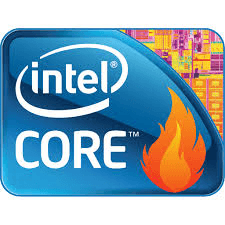The processor ( CPU ) is the brain of your computer. It is responsible for executing the instructions and calculations necessary for the operation of programs and applications. It is therefore essential to ensure that your CPU is efficient and stable, especially if you use your computer for demanding tasks like programming or gaming.
For this, there is CPU stress testing software that allows you to subject your processor to intense workloads and measure its responsiveness, temperature and energy consumption. These software can help you:
- Detect possible defects or malfunctions in your CPU
- Check your system for compatibility and stability after changing BIOS settings or overclocking your CPU
- Compare the performance of different CPU models or brands
- Optimize your computer's cooling and power supply

In this article, we will introduce you to the 5 best CPU stress testing software for programmers and gamers along with their features, advantages and disadvantages.
Prime95
Prime95 is one of the most popular and widely used CPU stress testing software. It is based on the GIMPS (Great Internet Mersenne Prime Search) project, which aims to find the largest Mersenne prime numbers. A Mersenne prime is a prime number that can be written in the form 2^n – 1, where n is a positive integer.
Prime95 uses the Fast Fourier Transform (FFT) algorithm to test the accuracy and stability of the CPU by performing complex mathematical operations on these numbers. It offers three test modes:
- Torture Test: the most demanding mode, which pushes the CPU to its maximum limit and generates a lot of heat. It is recommended to check system stability after overclocking or hardware change.
- Blend Test: Intermediate mode, which tests both CPU and RAM. It is useful for detecting errors or incompatibilities between these two components.
- Small FFTs test: the lightest mode, which mainly tests the CPU cache. It is suitable for measuring CPU temperature and consumption.

Prime95 is free and easy to use software. Just download it, run it and choose the desired test mode. It then displays real-time results, such as CPU frequency, temperature, voltage, and power. It also allows you to save the results to a text file or send a report by email.
The advantages of Prime95 are:
- Its reliability and precision
- Its compatibility with all types and generations of CPUs
- Its ability to detect the slightest errors or instabilities in the system
The disadvantages of Prime95 are:
- Its excessive energy consumption and excessive heat generation
- Its lack of customizable options
- Its austere and unintuitive interface
AIDA64 Extreme

AIDA64 Extreme is a complete and versatile software that not only allows you to test the stress of the CPU, but also that of the GPU, hard drive, SSD, network and even sensors. It offers a wealth of detailed information on all the components and peripherals of your computer, as well as optimization, diagnostic and benchmarking tools.
AIDA64 Extreme offers several types of CPU stress tests, which use different algorithms to stress the processor:
- FPU Test: The most intensive test, which uses floating point instructions to simulate scientific or graphics calculations. It is ideal for measuring CPU temperature and consumption.
- CPU Test: The most balanced test, which uses integer and floating point instructions to simulate general calculations. It is suitable for evaluating the stability and performance of the CPU.
- Cache Test: the lightest test, which uses integer instructions to simulate simple calculations. It is useful for testing CPU cache speed and reliability.

AIDA64 Extreme is paid software, but it offers a 30-day free trial. It is easy to install and use. Just launch it, click on the “Tools” tab, then “System Stability Test”. It then displays the results in real time in the form of graphs, gauges or tables. It also allows you to save the results to an HTML or CSV file, or share them on social networks.
The advantages of AIDA64 Extreme are:
- Its richness and diversity of functionalities
- Its compatibility with all types and generations of CPUs
- Its customization and user-friendliness
The disadvantages of AIDA64 Extreme are:
- Its high cost
- Its significant consumption of resources
- Its sometimes complex and cluttered interface
Heavy Load

HeavyLoad is simple and effective software that allows you to test the stress of the CPU, but also that of the GPU, RAM memory, hard drive or SSD. It simulates high workload on your computer by running multiple tasks simultaneously, such as:
- Calculate the decimal places of the number Pi
- Allocate and free memory
- Write and read files
- Draw 3D graphics

HeavyLoad is free and easy to use software. Just download it, run it and choose which tasks to perform. It then displays real-time results in the form of colored indicators, which show the usage level of the CPU, GPU, RAM, HDD or SSD. It also allows you to display the results in a separate window or in the taskbar.
The advantages of HeavyLoad are:
- Its lightness and speed
- Its simplicity and practicality
- Its ability to adjust the duration and intensity of the test
The disadvantages of HeavyLoad are:
- Its lack of detailed information on system performance
- Its lack of customizable options
- Its minimalist and unattractive interface
Intel BurnTest

Intel BurnTest is software specially designed to stress test Intel CPUs. It uses the Linpack algorithm, which is a set of mathematical routines used to solve systems of linear equations. This algorithm is very demanding on the CPU, as it requires a lot of floating point operations and uses cache memory intensively.
Intel BurnTest offers four levels of testing:
- Very High: the highest level, which uses all available memory and tests all CPU cores. It is recommended to check the maximum stability of the system.
- High: the intermediate level, which uses around 80% of available memory and tests all CPU cores. It is suitable for evaluating the average performance of the system.
- Standard: the basic level, which uses approximately 50% of available memory and tests all CPU cores. It is useful for detecting obvious system errors.
- Custom: the customizable level, which allows you to choose the amount of memory to use and the number of cores to test.
Intel BurnTest is free and easy to use software. Just download it, run it and choose the test level you want. It then displays real-time results in text form, which shows the number of iterations completed, elapsed time, processor speed, and maximum temperature reached. It also allows you to save the results to a text file or send them by email.

The advantages of Intel BurnTest are:
- Its reliability and precision
- Its compatibility with Intel CPUs of all generations
- Its simplicity and speed
The disadvantages of Intel BurnTest are:
- Its excessive energy consumption and excessive heat generation
- Its lack of customizable options
- Its austere and unintuitive interface
Cinebench

Cinebench is CPU stress testing software that uses the Cinema 4D graphics engine to simulate complex and realistic 3D scenes. It measures the CPU's ability to render these scenes using all available cores. It offers two test modes:
- Multi-Core Test: the most comprehensive mode, which tests all CPU cores at the same time. It is ideal for evaluating overall system performance.
- Single-Core Test: the simplest mode, which tests only one CPU core at a time. It is useful for comparing individual core performance.
Cinebench is free and easy to use software. Just download it, run it and click on the “Run” button corresponding to the desired test mode. It then displays the results as a numerical score, which indicates the number of frames per second (FPS) rendered by the CPU. It also allows you to compare the results with those of other CPU models or brands.

The advantages of Cinebench are:
- Its quality and realism
- Its compatibility with all types and generations of CPUs
- Its ease and speed
The disadvantages of Cinebench are:
- Its significant consumption of resources
- Its lack of customizable options
- Its minimalist and unattractive interface
Why do you need CPU stress testing?
CPU stress tests are operations that aim to evaluate the reliability, stability and performance of your processor by subjecting it to maximum workload for an extended period of time. CPU stress testing software uses different techniques to push your CPU to 100% capacity for an hour or more and then analyzes its behavior.
CPU stress tests are also called CPU load tests. They are useful for several reasons:
- Test the stability of the system beyond standard usage and its limits
- Detect possible CPU faults or malfunctions
- Determine the maximum load the CPU can support
- Confirm that planned specifications are met
- Optimize the cooling system and CPU noise level
- Compare the performance of different CPU models or brands
- Prepare for a safe CPU overclock
CPU stress tests are particularly recommended for people who are experiencing performance issues with their older computer, or for those who use their computer for demanding tasks like programming or gaming. They help ensure that the CPU is able to meet user needs without compromising system health.
FAQs
Here are some frequently asked questions about CPU stress testing software:
What is the ideal duration for a CPU stress test?
There is no universal answer to this question, as it depends on the software used, the intensity level chosen, the type of CPU tested and the objective sought. In general, it is considered that a CPU stress test should last at least 15 minutes to be meaningful, and at least an hour to be complete. Some software offers predefined durations, while others allow you to adjust them manually.
What is the maximum tolerable temperature for a CPU?
The maximum tolerable temperature for a CPU varies depending on the model, brand and generation of the processor. It is generally indicated in the manufacturer's technical characteristics. On average, we can consider that a CPU should not exceed 80°C under load, and that it must remain below 60°C when idle. If your CPU exceeds these thresholds, it may suffer irreversible damage or reduce its lifespan.
How to reduce CPU temperature during stress test?
There are several ways to reduce CPU temperature during a stress test, such as:
- Improve case cooling by adding fans or optimizing airflow. You can consult our guide to the best CPU fans for your processor to choose the model best suited to your needs.
- Change the CPU heatsink or thermal paste. These elements are essential to ensure good heat transfer between the CPU and the cooling system.
- Use a liquid or air cooling system. Liquid cooling is more efficient and quieter than air cooling, but it is also more expensive and more complex to install.
- Reduce CPU frequency or voltage. This reduces the energy consumption and heat production of the CPU, but also reduces its performance.
- Stop unnecessary programs or services running in the background. They can consume CPU resources and increase its temperature. You can use software like AVG TuneUp to identify and disable these programs.
- Clean any dust or debris that may block the vents. Dust can reduce the efficiency of the cooling system and prevent air from circulating properly within the case.
What are the results of a stress test?
The results of a CPU stress test may vary depending on the software used, the test mode chosen, the type of CPU tested, and environmental conditions. In general, a CPU stress test can be considered successful if:
- The CPU does not exhibit errors or instabilities
- CPU does not exceed maximum tolerable temperature
- CPU reaches or exceeds rated frequency
- CPU scores high compared to other similar processors
Conclusion
CPU stress testing is an important operation to check the reliability, stability and performance of your computer. There are several software programs that allow you to perform this test, each having its own characteristics, advantages and disadvantages. We have presented to you in this article the 5 best CPU stress testing software for programmers and gamers:
- Prime95: the most reliable and accurate software, but also the most demanding and hottest
- AIDA64 Extreme: the most complete and versatile software, but also the most expensive and complex
- HeavyLoad: the simplest and most efficient software, but also the most limited and least attractive
- Intel BurnTest: the software specially designed for Intel CPUs , but also the most energy-consuming and the least intuitive
- Cinebench: the software that uses realistic 3D scenes, but also the most resource-intensive and the least customizable
We hope that this article has been helpful to you in choosing the software that best suits your needs and expectations. Please feel free to share your comments or questions with us in the section below.




